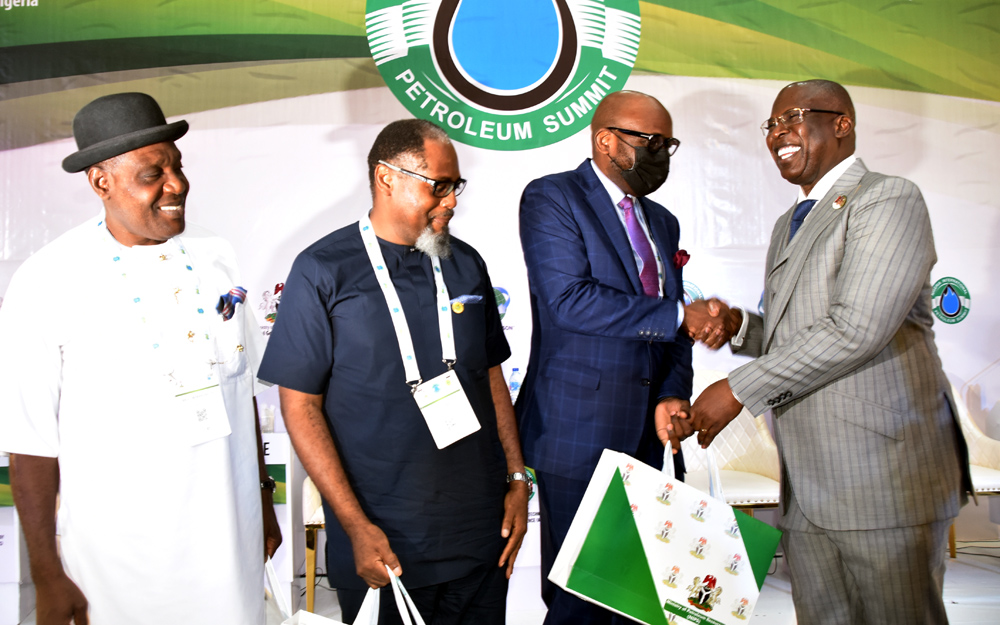Oil & Energy
‘Why Europe’s Dependence On US LNG Is Risky’

In the current year, the United States boasts status as the world’s biggest liquefied natural gas (LNG) exporter as deliveries to both Europe, in the throes of a severe energy crisis, and Asia surge.
So far in 2022, five developers have signed over 20 long-term deals to supply more than 30 million metric tons/year of LNG or roughly 4 Bcf/d, to energy-starved buyers in Europe and Asia.
Europe’s desperate attempt to rid itself of Russian gas became even more urgent this week, as Moscow announced that flows through Nord Stream 1 to Germany would remain cut off until the West lifted sanctions.
That desperation has resulted in Europe displacing Asia as the top destination for U.S. LNG. In fact, Europe now receives 65% of total U.S. LNG exports.
But there are growing concerns that trading one dependency for another carries another kind of risk: Putting all your eggs in the U.S. LNG basket means banking on Mother Nature.
U.S. LNG supplies might not be vulnerable to Russia, but they are vulnerable to extreme weather and harrowing hurricane seasons that disrupt output and exports. Europe cannot afford any more disruptions.
Vulnerability in the Gulf of Mexico
The bulk of LNG export facilities in the United States, including proposed facilities, are housed along the Gulf Coast, and much of the gas that feeds those facilities comes from nearby inland reserves, from New Mexico and Texas to Louisiana, and beyond.
This is a region prone to hurricanes, meaning that when hurricanes come roaring inbound, everything from liquefaction to shipping and extraction to processing is at risk of disruption. It has happened before, and recently.
In recent years, multiple hurricanes have resulted in varying degrees of disruption for the LNG market, with impacts stretching across the supply chain from brief outages to long layoffs of processing and shipping.
Hurricane Laura in 2020 resulted in a two-week disruption at the Sabine Pass LNG export facility and well over a month at Cameron LNG.
Last year, Hurricane Ida resulted in a major and long-lasting curtailment of offshore gas production.
This year, a June explosion at the Texas-based Freeport LNG facility knocked nearly 20% of US LNG export capacity offline, sending LNG markets into a tailspin.
Scientists say the Gulf coast hurricanes are becoming increasingly severe, causing record-breaking compound flooding and placing critical infrastructure at risk.
Meanwhile, whereas the United States has the world’s largest lineup of new LNG projects in the works, there are also limits to how far this can go without more pipeline capacity to accommodate this wildly expanding energy segment.
In the Appalachian Basin, the country’s largest gas-producing region churning out more than 35 Bcf/d, environmental groups have repeatedly stopped or slowed down pipeline projects and limited further growth in the Northeast.
This leaves the Permian Basin and Haynesville Shale to shoulder much of the growth forecast for LNG exports. Indeed, EQT Corp. (NYSE: EQT) CEO Toby Rice recently acknowledged that Appalachian pipeline capacity has “hit a wall.”
Analysts at East Daley Capital Inc. have projected that U.S. LNG exports will grow to 26.3 Bcf/d by 2030 from their current level of nearly 13 Bcf/d.
For this to happen, the analysts say another 2-4 Bcf/d of takeaway capacity would need to come online between 2026 and 2030 in the Haynesville.
“This assumes significant gas growth from the Permian and other associated gas plays. Any view where oil prices take enough of a dip to slow that activity in the Permian and you’re going to have even more of a call for gas from gassier basins,” the analysts have said.
Mozambique To The Rescue Though it may be rather late in the game, Europe is beginning to seriously consider Africa for its future energy supplies. Most notably, Mozambique is poised to ship its first cargo of liquefied natural gas (LNG) to Europe at this critical time.
This, too, is fraught with vulnerabilities in the form of political instability and insurgency.
French TotalEnergies’ Mozambique LNG project has been sidelined by insurgency. Italian Eni’s Coral-Sul FLNG is safe from the violent flashpoint and on track to help serve Europe, with BP already having inked a deal to buy all of the output for 20 years from the $7-billion Coral-Sul project, designed to produce 3.4 million metric tons of LNG.
The Italian company is already planning a second floating export platform in the southern African country that could be completed in less than four years. But nothing is certain here.
In the heart of the insurgency, TotalEnergies has announced plans to resume its massive $20 billion project toward the end of the year, with the terminal expected to churn out 13.1 million tons of LNG annually.
That is, if it ever gets past the insurgency that led to a declaration of force majeure. The project hopes to restart in the first half of next year.
Optimism runs high, despite all. ExxonMobil says it will make a final decision for an even larger project in the near future.
Meanwhile, the European Union has planned a five-fold increase in financial support to $15 million to fight militants near Mozambique’s gas projects.
The EU has already pledged to provide the country’s army with an additional 45 million euros ($45 million) of financial support, and has so far given a SADC mission in the country 2.9 million euros of funding.
Over the short-term, Europe is making headway in filling up its gas storage, and is now nine weeks ahead of where it was this time last year, even if it has come at a hefty premium.
European gas storage levels are above 70%, and have even surpassed the 5-year average, according to data from Gas Infrastructure Europe (GIE).
By November 1st, the EU will likely hit 80% natural gas storage capacity, just in time for peak winter demand. Germany is even aiming for 95% capacity, and is already at 85%.
“The EU already surpassed its September 1 interim filling target in early July and is still on pace to reach the November 1 target,” Jacob Mandel, senior associate for commodities at Aurora Energy Research, has told Reuters.
Indeed, analysts at Standard Chartered Plc are saying that President Vladimir Putin’s gas weapon will be effectively blunted by the inventory build, with Europe set to go through winter “comfortably” without Russian gas.
This, however, poses two different problems: First, Europe will have to pay a heavy price, the cost of replenishing natural gas stocks is estimated at over 50 billion euros ($51 billion), 10 times more than the historical average for filling up tanks ahead of winter; Second, the bloc can’t survive on storage alone unless it severely reduces consumption for the winter.
Europe, as it stands, is vulnerable on every energy front, and if it’s not geopolitics and insurgency, it’s Mother Nature at her wildest.
Kimani reports for Oilprice.com
Oil & Energy
FG Woos IOCs On Energy Growth
The Federal Government has expressed optimism in attracting more investments by International Oil Companies (IOCs) into Nigeria to foster growth and sustainability in the energy sector.
This is as some IOCs, particularly Shell and TotalEnergies, had announced plans to divest some of their assets from the country.
Recall that Shell in January, 2024 had said it would sell the Shell Petroleum Development Company of Nigeria Limited (SPDC) to Renaissance.
According to the Minister of State for Petroleum Resources (Oil), Heineken Lokpobiri, increasing investments by IOCs as well as boosting crude production to enhancing Nigeria’s position as a leading player in the global energy market, are the key objectives of the Government.
Lokpobiri emphasized the Ministry’s willingness to collaborate with State Governments, particularly Bayelsa State, in advancing energy sector transformation efforts.
The Minister, who stressed the importance of cooperation in achieving shared goals said, “we are open to partnerships with Bayelsa State Government for mutual progress”.
In response to Governor Douye Diri’s appeal for Ministry intervention in restoring the Atala Oil Field belonging to Bayelsa State, the Minister assured prompt attention to the matter.
He said, “We will look into the issue promptly and ensure fairness and equity in addressing state concerns”.
Lokpobiri explained that the Bayelsa State Governor, Douyi Diri’s visit reaffirmed the commitment of both the Federal and State Government’s readiness to work together towards a sustainable, inclusive, and prosperous energy future for Nigeria.
While speaking, Governor Diri commended the Minister for his remarkable performance in revitalisng the nation’s energy sector.
Oil & Energy
Your Investment Is Safe, FG Tells Investors In Gas
The Federal Government has assured investors in the nation’s gas sector of the security and safety of their investments.
Minister of State for Petroleum Resources (Gas), Ekperikpe Ekpo, gave the assurance while hosting top officials of Shanghai Huayi Energy Chemical Company Group of China (HUAYI) and China Road and Bridge Corporation, who are strategic investors in Brass Methanol and Gas Hub Project in Bayelsa State.
The Minister in a statement stressed that Nigeria was open for investments and investors, insisting that present and prospective foreign investors have no need to entertain fear on the safety of their investment.
Describing the Brass project as one critical project of the President Bola Tinubu-led administration, Ekpo said.
“The Federal Government is committed to developing Nigeria’s gas reserves through projects such as the Brass Methanol project, which presents an opportunity for the diversification of Nigeria’s economy.
“It is for this and other reasons that the project has been accorded the significant concessions (or support) that it enjoys from the government.
“Let me, therefore, assure you of the strong commitment of our government to the security and safety of yours and other investments as we have continually done for similar Chinese investments in Nigeria through the years”, he added.
Ekpo further tasked investors and contractors working on the project to double their efforts, saying, “I want to see this project running for the good of Nigeria and its investors”.
Earlier in his speech, Leader of the Chinese delegation, Mr Zheng Bi Jun, said the visit to the country was to carry out feasibility studies for investments in methanol projects.
On his part, the Managing Director of Brass Fertiliser and Petrochemical Ltd, Mr Ben Okoye, expressed optimism in partnering with genuine investors on the project.
Oil & Energy
Oil Prices Record Second Monthly Gain
Crude oil prices recently logged their second monthly gain in a row as OPEC+ extended their supply curb deal until the end of Q2 2024.
The gains have been considerable, with WTI adding about $7 per barrel over the month of February.
Yet a lot of analysts remain bearish about the commodity’s prospects. In fact, they believe that there is enough oil supply globally to keep Brent around $81 this year and WTI at some $76.50, according to a Reuters poll.
Yet, like last year in U.S. shale showed, there is always the possibility of a major surprise.
According to the respondents in that poll, what’s keeping prices tame is, first, the fact that the Red Sea crisis has not yet affected oil shipments in the region, thanks to alternative routes.
The second reason cited by the analysts is OPEC+ spare capacity, which has increased, thanks to the cuts.
“Spare capacity has reached a multi-year high, which will keep overall market sentiment under pressure over the coming months”, senior analyst, Florian Grunberger, told Reuters.
The perception of ample spare capacity is definitely one factor keeping traders and analysts bearish as they assume this capacity would be put into operation as soon as the market needs it. This may well be an incorrect assumption.
Saudi Arabia and OPEC have given multiple signs that they would only release more production if prices are to their liking, and if cuts are getting extended, then current prices are not to OPEC’s liking yet.
There is more, too. The Saudis, which are cutting the most and have the greatest spare capacity at around 3 million barrels daily right now, are acutely aware that the moment they release additional supply, prices will plunge.
Therefore, the chance of Saudi cuts being reversed anytime soon is pretty slim.
Then there is the U.S. oil production factor. Last year, analysts expected modest output additions from the shale patch because the rig count remained consistently lower than what it was during the strongest shale boom years.
That assumption proved wrong as drillers made substantial gains in well productivity that pushed total production to yet another record.
Perhaps a bit oddly, analysts are once again making a bold assumption for this year: that the productivity gains will continue at the same rate this year as well.
The Energy Information Administration disagrees. In its latest Short-Term Energy Outlook, the authority estimated that U.S. oil output had reached a record high of 13.3 million barrels daily that in January fell to 12.6 million bpd due to harsh winter weather.
For the rest of the year, however, the EIA has forecast a production level remaining around the December record, which will only be broken in February 2025.
Oil demand, meanwhile, will be growing. Wood Mackenzie recently predicted 2024 demand growth at 1.9 million barrels daily.
OPEC sees this year’s demand growth at 2.25 million barrels daily. The IEA is, as usual, the most modest in its expectations, seeing 2024 demand for oil grow by 1.2 million bpd.
With OPEC+ keeping a lid on production and U.S. production remaining largely flat on 2023, if the EIA is correct, a tightening of the supply situation is only a matter of time. Indeed, some are predicting that already.
Natural resource-focused investors Goehring and Rozencwajg recently released their latest market outlook, in which they warned that the oil market may already be in a structural deficit, to manifest later this year.
They also noted a change in the methodology that the EIA uses to estimate oil production, which may well have led to a serious overestimation of production growth.
The discrepancy between actual and reported production, Goehring and Rozencwajg said, could be so significant that the EIA may be estimating growth where there’s a production decline.
So, on the one hand, some pretty important assumptions are being made about demand, namely, that it will grow more slowly this year than it did last year.
This assumption is based on another one, by the way, and this is the assumption that EV sales will rise as strongly as they did last year, when they failed to make a dent in oil demand growth, and kill some oil demand.
On the other hand, there is the assumption that U.S. drillers will keep drilling like they did last year. What would motivate such a development is unclear, besides the expectation that Europe will take in even more U.S. crude this year than it already is.
This is a much safer assumption than the one about demand, by the way. And yet, there are indications from the U.S. oil industry that there will be no pumping at will this year. There will be more production discipline.
Predicting oil prices accurately, even over the shortest of periods, is as safe as flipping a coin. With the number of variables at play at any moment, accurate predictions are usually little more than a fluke, especially when perceptions play such an outsized role in price movements.
One thing is for sure, though. There may be surprises this year in oil.
lrina Slav
Slav writes for Oilprice.com.
-
Niger Delta5 days ago
A’Ibom Police Enforces Anti-Grazing Law
-
Nation5 days ago
Council Boss Flags Off Projects
-
Politics5 days ago
Thugs Clash Over Anyanwu, Ude-Okoye At PDP BoT Meeting
-
Business5 days ago
LCCI Urges FG To Front Manufacturing Reforms
-

 Politics5 days ago
Politics5 days agoPDP Governors’ Forum Pays Condolence Visit To Makinde …Over Demise Of Elder Brother
-

 Politics5 days ago
Politics5 days agoHow I Would’ve Handled Subsidy Removal As President – Amaechi
-
Nation5 days ago
NGO Honours Individuals, Groups For Outstanding Contributions To Humanity
-
Politics5 days ago
Stop Lying About Your Wealth, Odinkalu Knocks Buhari

